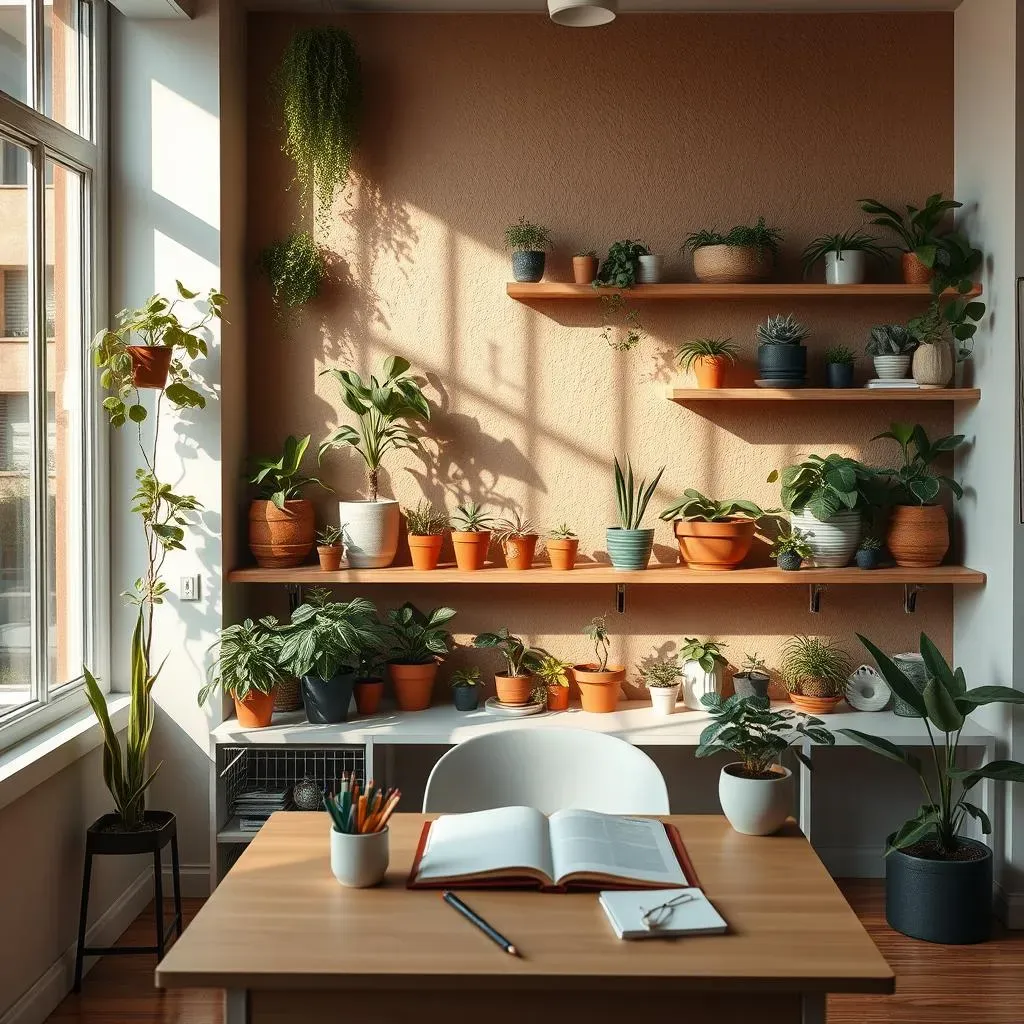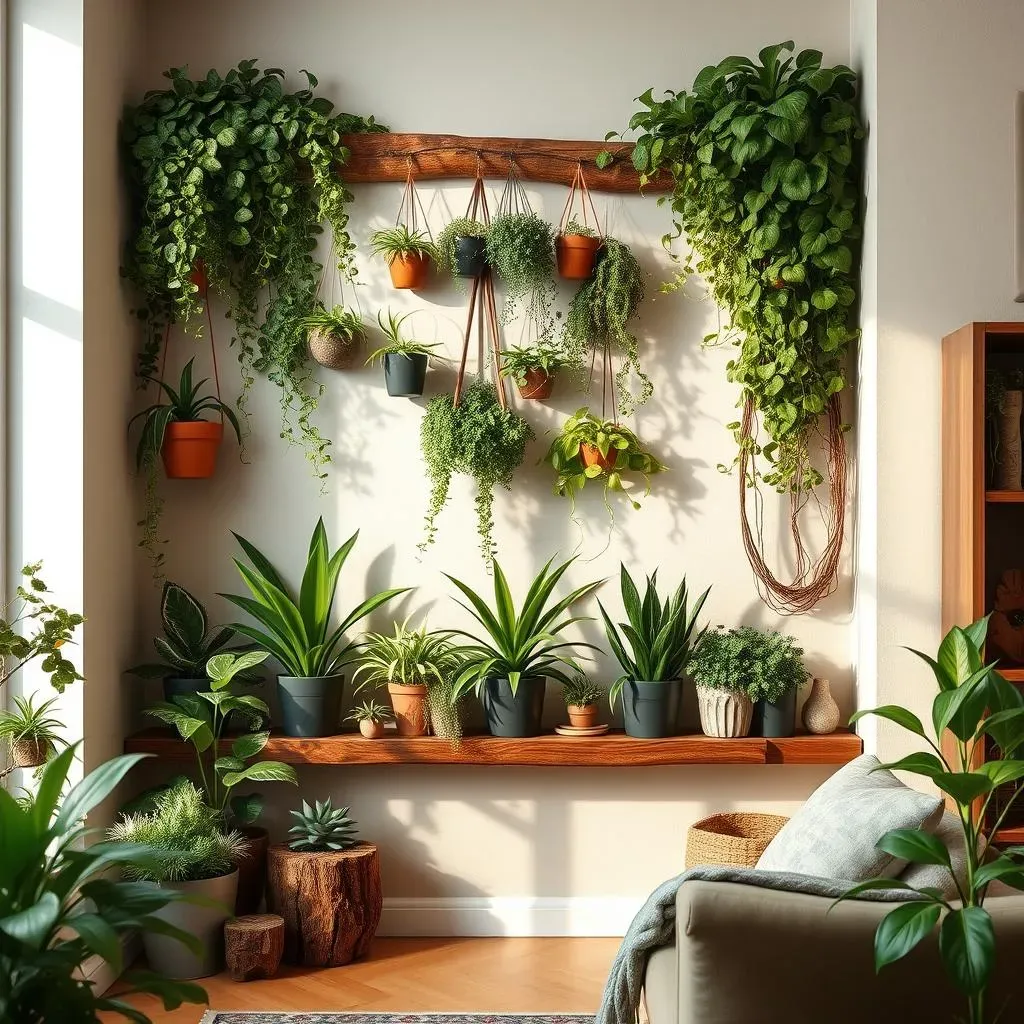Table of Contents
Tired of staring at blank walls? Ready to add a touch of nature and personality to your home without breaking the bank? Then get ready to transform your space with the magic of a DIY accent wall with plants! This article is your ultimate guide to creating a stunning, living work of art that will breathe life into any room. We'll walk you through every step, from the initial planning stages – choosing the perfect wall and selecting the right plants – to the actual construction, including materials and techniques. Whether you're a seasoned DIY enthusiast or a complete beginner, we've got you covered with simple, easy-to-follow instructions and inspiring examples. We'll also share expert tips on maintaining your lush, green creation, ensuring it thrives for years to come. Get ready to unleash your creativity and discover the joy of bringing the outdoors in with your very own DIY accent wall with plants. Prepare to be amazed at how easily you can create a dramatic and unique focal point in your home!
Planning Your DIY Accent Wall with Plants

Planning Your DIY Accent Wall with Plants
First things first: choosing the right wall is crucial! Consider the amount of natural light the wall receives. Most plants need at least a few hours of sunlight daily, so a south-facing wall is often ideal. However, low-light plants exist, opening up possibilities for even dimly lit corners. Next, think about the wall's size and the overall style of the room. A small wall might be perfect for a compact vertical garden, while a larger wall offers more space for a more ambitious project. Don't forget about the wall's material! A sturdy wall is essential, especially if you’re planning a heavier plant arrangement. If you’re unsure about your wall's sturdiness, consider consulting a handyman or using lightweight materials and techniques. For example, if your wall is made of drywall, you might want to avoid overly heavy planters. Instead, opt for smaller pots, or use a lightweight wall hanging system. Check out our guide on DIY accent walls for small spaces for more ideas.
Wall Factor | Considerations |
|---|---|
Sunlight | Amount of direct and indirect light |
Size | Wall dimensions and available space |
Material | Wall type and sturdiness |
Style | Room's existing decor and desired aesthetic |
Once you've selected your wall, it’s time to visualize your design! Sketch out a few ideas, noting the placement of plants, shelves, or other elements. Think about the overall look you want to achieve—modern, rustic, bohemian, or something else entirely? This planning phase is key to avoid costly mistakes later on. Consider creating a mood board with images of similar DIY plant walls that you like. This will help you refine your vision and ensure your final design is cohesive and visually appealing. Remember, a well-planned project is half the battle won! Want some more ideas? Check out our budget-friendly DIY accent wall ideas to get started!
- Measure the wall accurately.
- Sketch out multiple design options.
- Consider the overall room style.
- Gather inspiration from online resources.
Creating Your Stunning DIY Accent Wall with Plants: Choosing Plants & Materials
Choosing the Right Plants
Now for the fun part: selecting your plant stars! Think about the lighting conditions in your chosen spot. A south-facing wall bathed in sunshine calls for sun-loving plants like succulents or snake plants. For shadier areas, low-light champions such as pothos or ZZ plants are your best bet. Consider the size and growth habits of your plants too. Trailing vines like pothos can cascade beautifully from shelves, while upright plants might need individual pots or a structured support system. Don't forget about the overall aesthetic you're aiming for! A mix of textures and colors can create a truly dynamic display. For example, combining leafy greens with flowering plants can add a burst of color and visual interest. Need some inspiration? Check out these DIY accent wall with plants ideas for more ideas.
Remember, variety is the spice of life (and plant walls!). Experiment with different plant types to create a visually appealing display. Think about contrasting textures – the smooth leaves of a snake plant next to the fuzzy texture of a lambs ear, for example. Or play with colors, combining deep greens with lighter shades of foliage. Don't be afraid to mix and match! You could even incorporate small flowering plants to add pops of color. Just make sure to choose plants with similar light and watering needs to make care easier. A well-balanced mix of plants will create a more visually interesting and dynamic display. Looking for some more detailed information on plant care? Check out our guide on DIY accent walls with shelves to learn more about creating a supportive structure for your plants.
- Consider light levels.
- Choose plants with varying textures and colors.
- Select plants with similar care requirements.
- Don't be afraid to experiment!
Gathering Your Materials
Once you've chosen your plant pals, it's time to gather the necessary materials. This will depend on your chosen design, but common items include planters (terracotta, ceramic, or even recycled containers!), potting soil, plant supports (trellises, hooks, or shelves), and any decorative elements you want to incorporate. For example, you might add fairy lights, small pebbles for drainage or even artwork to complement your plant wall. For a more rustic look, consider using reclaimed wood for shelves or supports. A modern aesthetic might call for sleek metal planters and geometric shelving. The possibilities are endless!
Remember, the materials you choose will significantly impact the overall look and feel of your plant wall. Think about the style of your room and choose materials that complement the existing decor. If you're going for a minimalist look, stick to simple, clean lines and neutral colors. For a more bohemian vibe, embrace natural materials like wood and rattan. And if you want a touch of whimsy, consider adding colorful planters or decorative elements. Whatever your style, make sure your materials are high-quality and durable enough to withstand the wear and tear of a living, growing wall. Looking for more ideas on creating a cohesive design? Check out our article on DIY accent walls with paint for inspiration on creating a harmonious color palette.
Material | Purpose | Style Considerations |
|---|---|---|
Planters | To hold plants | Choose styles that complement your room's aesthetic |
Potting Soil | Provides nutrients for plants | Use a high-quality soil mix suitable for your chosen plants |
Plant Supports | Provides structure and support for climbing plants | Consider trellises, shelves, or hooks depending on your design |
Decorative Elements | Adds visual interest | Fairy lights, pebbles, artwork, etc. |
Maintaining Your Thriving DIY Accent Wall with Plants
Watering Wisdom
Keeping your leafy friends happy is key to a long-lasting, vibrant wall. Regular watering is essential, but avoid overwatering, which can lead to root rot. The frequency depends on your plants, the season, and your home's humidity. Check the soil moisture regularly – stick your finger a couple of inches into the soil; if it feels dry, it's time to water. Water thoroughly until water drains from the bottom of the pots. For hanging planters, consider using self-watering pots or a drip irrigation system for easier maintenance. Avoid getting the leaves excessively wet, as this can encourage fungal growth. For more ideas on creating a thriving indoor garden, check out our guide on DIY accent walls with plants.
Different plants have different watering needs. Research your specific plants to understand their individual preferences. Some plants, like succulents, prefer to dry out completely between waterings, while others, like ferns, prefer consistently moist soil. Overwatering is a common mistake, so it's always better to underwater slightly than to overwater. Signs of overwatering include yellowing leaves, wilting, and a soggy soil that smells foul. If you notice these signs, reduce watering frequency and ensure your pots have adequate drainage. For more ideas on creating a functional and visually appealing plant wall, check out our article on DIY accent walls with shelves.
- Water thoroughly but infrequently.
- Check soil moisture before watering.
- Research individual plant needs.
- Avoid overwatering.
Light & Location
Light is life for plants! Ensure your plants receive the appropriate amount of sunlight. Rotate your plants regularly to ensure even light exposure, preventing leggy growth. If your plant wall is in a low-light area, consider supplementing with grow lights, especially during winter months. Monitor your plants closely for signs of insufficient light – pale leaves, stretching towards the light source, or slow growth. If you notice these signs, adjust the light accordingly or relocate your plant wall. For more ideas on creating a well-lit space for your plants, check out our guide on DIY accent wall lighting ideas.
The placement of your plant wall also affects its success. Avoid placing it near heating vents or air conditioners, as these can cause drastic temperature fluctuations that stress plants. Also, consider airflow – good air circulation helps prevent fungal diseases. If your wall is near a window, be mindful of drafts and direct sunlight, which can scorch leaves. Regularly inspect your plants for pests or diseases and take appropriate action if needed. Early detection and treatment are crucial for preventing widespread problems. For more ideas on creating a vibrant and healthy plant wall, check out our article on DIY accent walls with plants.
Issue | Solution |
|---|---|
Insufficient light | Rotate plants, add grow lights |
Temperature fluctuations | Relocate away from vents |
Poor air circulation | Ensure adequate spacing between plants |
Pests/diseases | Regular inspection and treatment |
